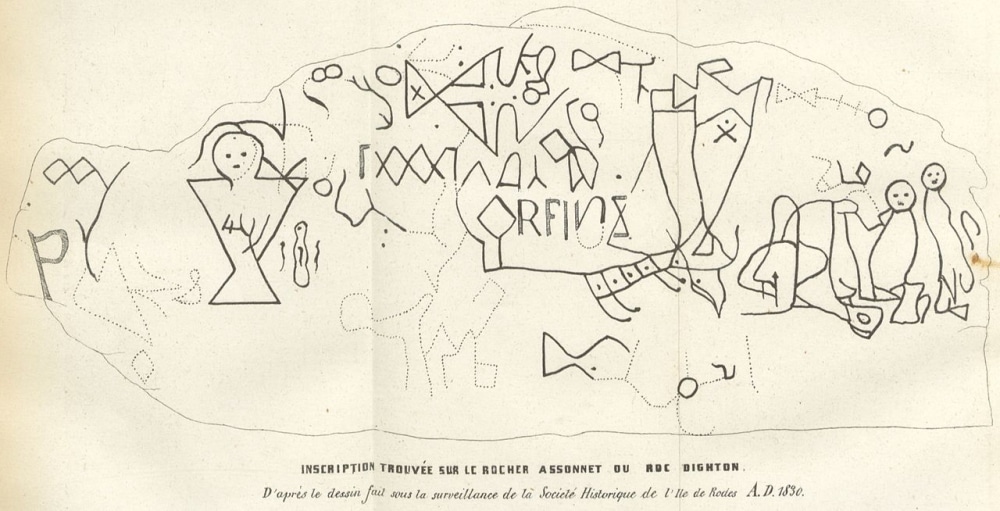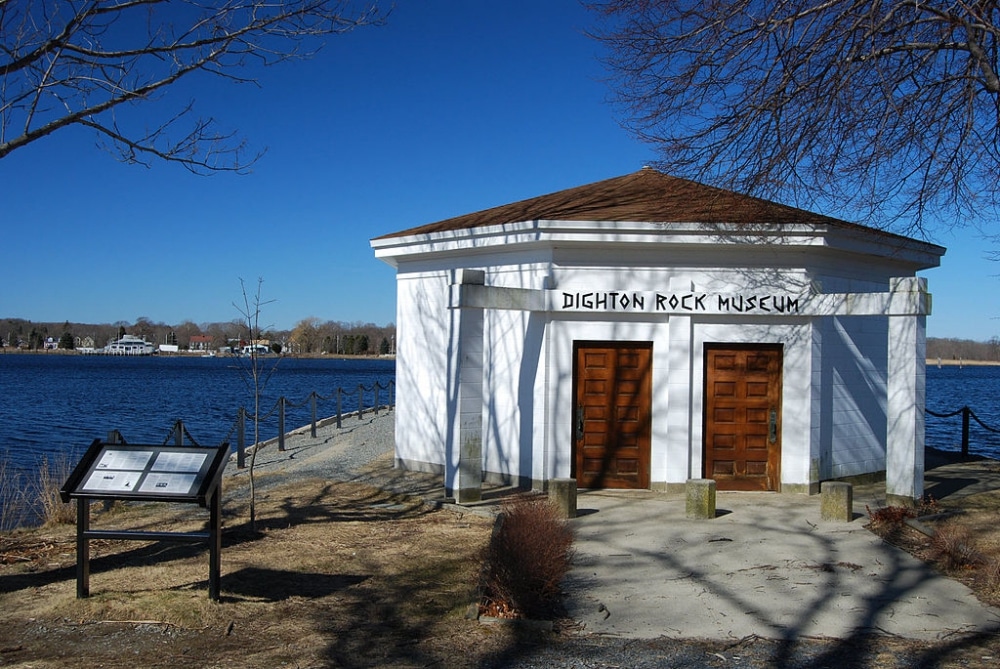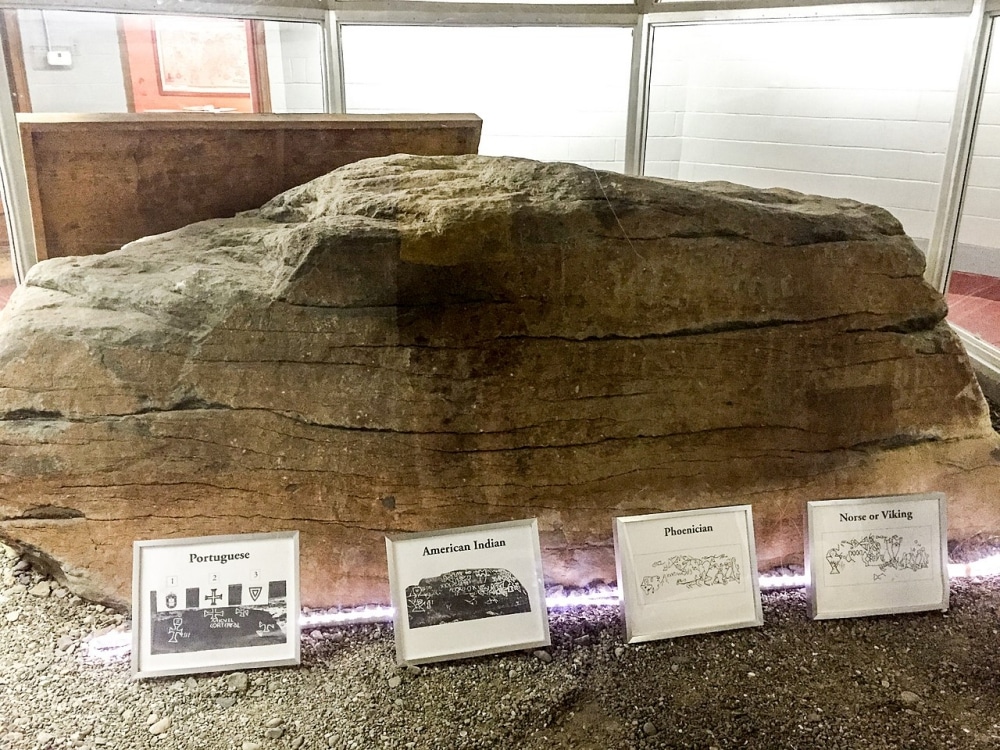The Mystery of Dighton Rock
For more than three centuries, the mysterious carvings on a stone in a Massachusetts river have had something to tell us. Will we ever get the message?

Coffee By Design | Portland, Maine
Photo Credit : Katherine KeenanHere’s what we know for certain: Sometime before 1680, someone left a 40-ton note in what is now Berkley, Massachusetts. Who it was remains a mystery, as does whatever message he or she wanted to convey — and pretty much everything else about the enigmatic Dighton Rock.
The Mystery of Dighton Rock
The first verifiable reference to the carvings on the boulder now called Dighton Rock dates back to 1680, when recent Harvard graduate John Danforth spotted the rock in what was then the town of Dighton and made a drawing of its carvings. That drawing — which is now in the collection of the British Museum — shows only the uppermost section of carvings, perhaps because the rest was obscured by water at the time of Danforth’s visit.
In the years that followed, many descriptions and drawings documented the “Dighton Writing Rock,” which even cropped up in the writings of such New England luminaries as Puritan minister Cotton Mather and poet James Russell Lowell.

Photo Credit : Public Domain
As for who created the carvings and what they mean, there have been more than three dozen theories put forward over the years. Danforth probably had it right, though, when he suggested that the stone was the work of Native Americans. To his eye, it seemed to tell of an encounter and subsequent battle with visitors who arrived by ship.
But despite the logic of Danforth’s theory (and the presence of many similar indigenous petroglyphs in the region), others have insisted that there must be a more creative story behind Dighton Rock. The 18th-century educator and theologian Ezra Stiles saw the stone as proof of a visit from ancient Phoenicians, while an alternative theory put forward around the same time attributed the carvings to long-ago visitors from Carthage. In the 19th century, Danish historian Carl Christian Rafn was convinced that Dighton Rock had been carved by Vikings. In the early 20th century, Brown University psychology professor Edmund Delabarre asserted that the carvings were Portuguese in origin. More recent theories have proposed Chinese, Japanese, or — of course — alien origins.
For most of its documented history, Dighton Rock sat in the Taunton River, whose rising waters sometimes obscured its art and where erosion took a heavy toll. It was located at a point where the river widens as it approaches Mount Hope Bay and the Atlantic Ocean beyond. In the rock’s original position, the carvings faced toward the sea. Were they intended as a message for visitors moving inland from the bay? That seems possible, but what could that message have been? Or what if the images were purely decorative, never intended to tell a story at all?

Photo Credit : Photo by Marcbela / CC BY
In 1963, during construction of a dam on the river, the five-foot-tall, nearly 10-foot-long rock was removed for preservation. It has since been housed in a small museum located within Dighton Rock State Park.

Photo Credit : Photo by Kenneth C. Zirkel / CC BY
Now that the stone is high and dry, researchers have been able to examine it more thoroughly; however, this has shed little light on its mysteries.
Before he settled on his Portuguese theory, Edmund Delabarre made another observation about Dighton Rock, one of the few that has shown itself to be demonstrably true. Delabarre claimed that Dighton Rock functioned as a sort of Rorschach test for those who encountered it: Upon its ambiguous canvas, observers can project almost anything they want to see.
The next time you’re on the South Shore, be sure to stop in at the little museum at Dighton Rock State Park. You probably won’t solve the stone’s mystery, but what you see might just tell you something about yourself.
This post was first published in 2018 and has been updated.








Its about a captive (stolen) female child and some of the travels to find her.
You have to wonder if there are more rocks burred in the surrounding area. Perhaps there is much more to this site, that could explain it’s origins or make it’s origins even more elusive.